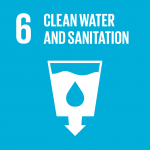
We strengthen
our environmental
management

We strengthen
our environmental
management
We find ourselves in an era of great environmental challenges, which require us to generate alternatives that will ensure the availability of natural resources and the stability of our surroundings.
Our priorities include efficient and responsible water management, reducing our ecological footprint on the planet, starting with Mexico, proper management of marine biodiversity, eco-design technologies to produce a circular economy and ongoing teamwork with each of our stakeholder groups to ensure the conservation of natural resources.
.

Our most significant environmental performance indicators are described below. Please visit GRI workzone to view all of our indicators




Water
In 2018 we consumed a total of 608 Ml, equivalent to 608,000 m3 of water, a reduction of 61% compared to the previous year.
| Water | 2014 | 2015 | 2016 | 2017 | 2018 |
|---|---|---|---|---|---|
| Annual Consumption m3/Ton Produced | 3 | 3.1 | 3.1 | 3.1 | 1.1 |
| Annual reduction/increase | -23% | 3% | 0% | -1% | -64% |
Note: Due to a review in 2021, the water consumption figure for 2018 should be adjusted from 1.1 to 2.57 m3/Ton produced, considering the scope presented during 2021.
The scope for the year 2021 includes the following facilities:
Plants: El Duque de Herdez Industrial Complex (Barilla, El Duque and Cogeneration Plant), Coronel Espinosa Plant, Mexico Plant (Zumpango), Herdez San Luis Potosí (Industries), Santa Rosa Tomates, Santa Rosa Vegetables, Herdez Villagrán, Nutrisa Plant and Lagos de Moreno Plant.
Distribution Centers: Mexico, San Luis Potosí, Los Mochis, Mérida, Guadalajara, Monterrey, CAF Lagos de Moreno and Tijuana.
Emissions
During 2018 we managed to reduce our emissions by a total of 5,023 Ton CO2e, due to savings actions in consumer equipment and the redesign of processes.
The intensity of emissions was 0.193 Ton of CO2e / Ton produced, a reduction of .3% with respect to 2017.
| Emissions | 2014 | 2015 | 2016 | 2017 | 2018 |
|---|---|---|---|---|---|
| Annual emissions CO2e/Ton Produced | 0.24 | 0.21 | 0.19 | 0.21 | 0.18 |
| Annual reduction/increase | 50% | -13% | -10% | 12% | -17% |
Energy
The total energy intensity produced by the Group in GJ / Ton was 2.51, 3.4% lower than the previous year. (GRI 302-3).
| Energy | 2014 | 2015 | 2016 | 2017 | 2018 |
|---|---|---|---|---|---|
| Annual consumption KWh/Ton Produced | 0.09 | 0.07 | 0.08 | 0.07 | 0.065 |
| Annual reduction/increase rate | -10% | -22% | 14% | -10% | -9% |
| Renewable energy | |||||
| Annual consumption KWh | 15,959,316 | 19,503,276 | 31,086,801 | 22,339,045 | 28,537,377 |
| Annual reduction/increase rate | 24% | 22% | 59% | -28% | 28% |
Of our Nutrisa stores, 18% are supplied entirely by renewable energy, and we expect this figure to grow to 80% of our stores during the first quarter of 2019. Notably, each store saves an average of 14.78 CO2e tons each year.
This includes 18% of Nutrisa stores.
Energy Cogeneration
In 2018, the El Duque Cogeneration Plant became operational, supplying electric and thermal energy to Grupo Herdez operations. By the end of the year, we were able to supply 17% of the total energy consumed by our operations.
Agricultural Sustainability
The purpose of the Agricultural Sustainability Program is to generate high quality food products, avoid altering the balance in the environment, use natural resources appropriately and maintain their integrity for future generations.
The main benefits of the Program include reducing costs for our suppliers, reducing environmental impact and producing agricultural raw materials of higher quality.
The producers are audited based on the guidelines contained in the Good Hygiene Practices Manual for Agricultural Products, according to two main criteria: Good Agricultural Practices Manual and Agricultural Sustainability Program.
During the first year of operation, our achievements included:
Sustainable Fishing
Grupo Herdez is part of the Pacific Alliance for Sustainable Tuna, which works toward the sustainable and responsible management of yellowfin and skipjack tuna fishing.
Members of the alliance represent more than 90% of the yellowfin and skipjack tuna fisheries in Mexico, especially in the Eastern Tropical Pacific. We fish in one of the most highly monitored and regulated zones in the world, with the most rigorous standards for marine conservation and environmental protection.
To reiterate our commitment to ongoing improvement and toward sustainable fisheries, the members of the Alliance decided to seek certification from the Marine Stewardship Council). The certification includes three principles:
Recently, we obtained the Marine Stewardship Council Certification, whereby:
As a result of the efforts of the International Dolphin Conservation Program, estimated dolphin mortality dropped 99% since 1997, making the Tropical Pacific the safest ocean for dolphins.